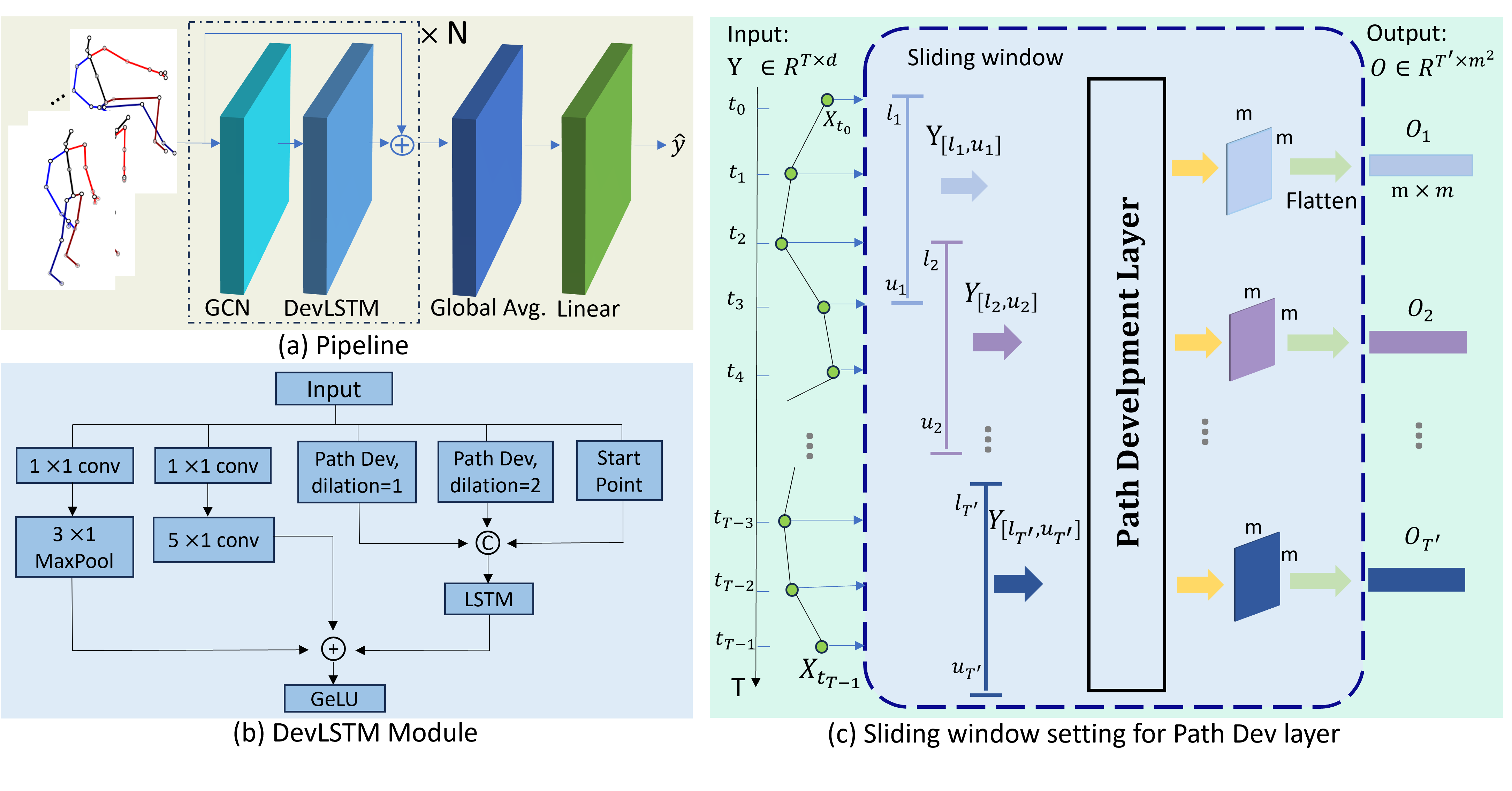 This repository is the official implementation of the paper entitled "GCN-DevLSTM: Path Development for Skeleton-Based Action Recognition".
This repository is the official implementation of the paper entitled "GCN-DevLSTM: Path Development for Skeleton-Based Action Recognition".
We provide configurations for three datasets:
-NTU RGB+D 60 skeleton -NTU RGB+D 120 skeleton -Chalearn 2013 skeleton
- numpy
- torch
- tqdm
Put downloaded data into the following directory structure:
- data/
- chalearn/
- ntu/
- ntu120/
- nturgbd_raw/
- nturgb+d_skeletons/ # from `nturgbd_skeletons_s001_to_s017.zip`
...
- nturgb+d_skeletons120/ # from `nturgbd_skeletons_s018_to_s032.zip`
...
- NTU_RGBD_samples_with_missing_skeletons.txt
- NTU_RGBD120_samples_with_missing_skeletons.txt
- NTU RGB+D 60 or 120
cd data/ntu or data/ntu120python get_raw_skes_data.pypython get_raw_denoised_data.pypython seq_transformation.py
- To train a new GCN-DevLSTM model run:
./train.sh
- To train model on NTU RGB+D 60/120 with bone, motion or dual graph modalities, setting bone/vel/labeling_mode arguments in the config file ntu_sub/train_joint.yaml.
set 'bone: False and vel: False' # use joint modality
set 'bone: True and vel: False' # use bone modality
set 'bone: False and vel:True' # use joint motion modality
set 'bone: True and vel: True' # use bone motion modality
set 'bone: True and vel: False and labeling_mode: dual_graph' # use dual graph modality
- To test a trained model:
./test_NTU.sh
- To ensemble the results of different modalities, run the following command:
./ensemble.sh
- Examples
- Train on NTU 120 XSub Joint on device 0
python main.py --config ./config/ntu_sub/train_joint.yaml --device 0
- Train on Chalearn 2013
python main.py --config ./config/chalearn/train_joint.yaml --device 0
- The model used is in
model/gcn_devLSTM.py
- Train on NTU 120 XSub Joint on device 0
We want to thank the authors of the following papers and repositories, their work formed the basis for this repository